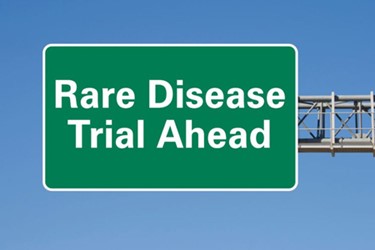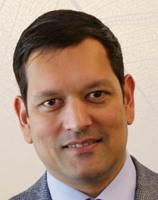A Rare Disease Trial Requires An Objective Scale And Site Training

By Ed Miseta, Chief Editor, Clinical Leader

When a family receives a diagnosis of Angelman syndrome, the news is life changing. Motor and communication skills of the patient are often severely impacted by the disease, making it challenging to communicate even the most basic needs. Symptoms include sleep deprivation at night and overstimulation during the day. This creates hardships for family members and care givers as well as patients. Unfortunately, these developmental disabilities primarily impact children.
“Researchers have known about this condition for 50 years,” says Amit Rakhit, Chief Medical Officer and head of research & development at Ovid Therapeutics. “Despite the research that has been done, there is still no treatment option available to patients. Patients experience an inability to walk and many become wheelchair bound. They are unable to dress themselves and will have difficulty speaking. Patients will develop behavioral abnormalities as well. Although Angelman syndrome is often diagnosed in children, patients can have normal lifespans. As a result, older patients cannot live independently and will require 24/7, long term care.”
Find The Right Expertise

Although there has been some research conducted on Angelman syndrome, there have been no clinical trials. Ovid will be the first company attempting to evaluate a treatment on patients. Industry sponsored studies have a purpose, which is to develop a medicine that can be broadly used to treat a patient population. That requires companies to create a study that will be accepted by sites and investigators while also meeting the approval of regulations.
“We have had to train sites on how to be compliant with those rules and regulations,” says Rakhit. “They have never taken part in a registrational study. That is due to the lack of research that has been conducted in this space. It was not easy finding the right sites, finding individuals with experience in Angelman syndrome, and training them on how to properly conduct a study.”
Determine The Proper End Points
Because Ovid was designing the first trial for patients with Angelman syndrome, determining the proper end points was another challenge. Ovid was dealing with a disease that impacts patients in several different ways and had never had a trial conducted. When you are creating a study for a disease that impacts motor skills, communication, and behavior, how do you decide what end points should be pursued?
“We spent a lot of time trying to determine the appropriate end points,” says Rakhit. “If a patient is experiencing seizures, that is an objective condition to measure. You can count the number of seizures a patient is experiencing and note if the number is constant or decreasing. With neuro-developmental conditions, the challenge is greater because there is a level of subjectivity involved with those measurements. One of our goals was to standardize what we were measuring and make the process as objective as possible.”
The first thing Ovid did was incorporate a scale that has been used in depression studies in the past. That scale, known as Clinical Global Impressions of Improvement (CGI-I), is a seven-point scale that assess the level of change in an individual. Levels one, two, and three indicated improvement in the patient, level four indicated no change at all, and levels five, six, and seven are levels of worsening. That scale provided the company with an objective level of change. It also incorporated multiple patient impacts of Angelman syndrome, including sleep, behavior, motor skills, and communication dysfunction.
“We then trained staff at the sites to assess patients with a baseline severity score based on specific guidance we created,” states Rakhit. “By having that baseline score, and then evaluating any change in condition using the CGII scale, we made these measurements as objective as possible. This also allowed us to create consistency across the raters. Regardless of which investigator was doing the measurements, the ratings would be consistent across all sites. We were able to take an already validated scale and adapt it to a population where no trial had been conducted in the past. We got the approval from regulators and used the scale in a successful Phase 2 study. We are now ready to launch a Phase 3 study and I think this scale will be usable in trials for other neuro-developmental conditions as well.”
A Focus On Patients
The treatment that patients in the Phase 3 trial will receive is a pill that is taken once per day. The Phase 2 study was conducted on both adolescents and adults. The Phase 3 study will focus on children between 4 and 12 years of age, with the dosage modified based on the child’s weight. The trial is a two-arm, placebo-controlled randomized study which will recruit approximately 60 patients from a dozen global sites.
Ovid makes a point of getting patients and families involved very early on in the development program. Even before starting the Phase 2 study, Ovid met with families to understand what day-to-day life was like for caregivers and the patients themselves. The company hoped to understand what families wanted and to incorporate those needs into the Phase 2 and Phase 3 studies.
“We also worked with a patient advocacy organization and were able to incorporate some of their input into the trial protocol,” says Rakhit. “For our Phase 2 and Phase 3 trials, we even selected one member of a patient advocacy group and made them a member of our clinical trials steering committee. That individual was able to provide us with many insights into the patient journey.”
For the Phase 2 trial, Ovid also conducted mock study days. On those days the company would bring in patients and families to see how they would react to the requirements of the clinical trial. If patients opted to participate in the study, they were shown what that experience would look like. Modifications were made to the protocol based on feedback from the families and caregivers.
“One of the things we found out is that the number of assessments we were doing required about five hours,” adds Rakhit. “That was just too difficult for many families to do. The comments we heard allowed us to simplify the entire process. For example, some in-person visits have now been changed to follow-ups conducted by phone. We have an iterative process that entails gaining insights from families, making adjustments, and then going back for more insights. Even our site selection process has been modified based on what we heard from families and advocacy groups.”
